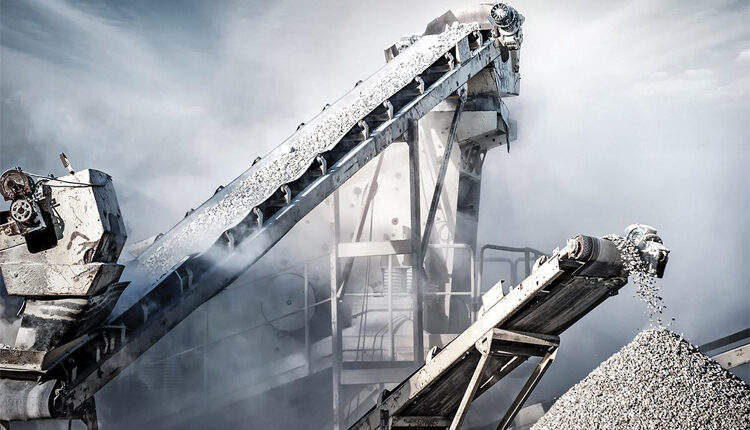Transforming Material Transport with Efficiency, Safety, and Intelligence
In industries dealing with massive volumes of bulk materials—such as mining, cement, steel, agriculture, and power—conveyors are the lifelines that ensure smooth and continuous operations. Over the decades, conveyor systems have evolved from simple mechanical devices to intelligent, efficient, and environmentally friendly systems. This transformation is primarily driven by innovations in design, materials, control systems, and digital integration.
Among the various types of conveyors, Belt, Apron, Screw, and Enmasse conveyors remain the workhorses of bulk handling. Each has its niche and purpose, and recent technological advancements have significantly improved their performance, durability, and adaptability.Let’s explore the latest innovations in each of these types.
Belt Conveyors – Smarter, Stronger, and Sustainable
Belt conveyors are the most commonly used systems in bulk handling, known for their simplicity and cost-effectiveness. Traditionally used for transporting large volumes over long distances, today’s belt conveyors are far more sophisticated.
Key Innovations:
• High-Tension Belts and Energy-Efficient Drives: Modern belt conveyors are equipped with high-tension steel cord belts that can span distances up to 20 km or more without intermediate transfer points. Combined with low rolling resistance idlers and energy-efficient drives, they reduce energy consumption by 20–30%.
• Pipe and Trough Designs: Pipe conveyors are gaining popularity in environmentally sensitive areas. They fully enclose the material, minimizing spillage, dust, and weather exposure, making them ideal for coal, cement, and fertilizer handling.
• Smart Monitoring and Predictive Maintenance: Integration of IoT sensors allows continuous monitoring of belt speed, alignment, temperature, and wear. AI-based predictive maintenance systems can detect failures before they occur, thus avoiding costly downtime.
• Modular and Curved Conveyors: Modular designs with pre-engineered sections make installation faster and more flexible. Curved conveyors eliminate the need for multiple transfer points, reducing material degradation and improving operational flow.
Apron Conveyors – Rugged Designs for Harsh Environments
Apron conveyors are designed to handle heavy, sharp, and hot materials—conditions where traditional belts would fail. Found commonly in steel plants, foundries, and cement kilns, these conveyors use overlapping metal pans or aprons attached to chains or rollers.
Key Innovations:
• Improved Heat and Wear Resistance: Recent advancements include aprons made from heat-resistant alloys and ceramic liners, which significantly extend service life in high-temperature and abrasive environments.
• Sealed and Enclosed Apron Systems: Newer apron conveyors come with sealed covers and underpans, which minimize material spillage, reduce dust generation, and protect components from corrosive or wet materials.
• Hydraulic and Frequency-Controlled Drives: Modern apron conveyors use hydraulic or VFD-controlled electric drives for smooth speed control, load optimization, and better energy efficiency.
• Smart Chain Monitoring: Sensors embedded in chains and sprockets help track elongation, load stresses, and lubrication status. This innovation reduces unscheduled downtimes due to mechanical failure.
Screw Conveyors – Compact, Versatile, and Now Smarter
Screw conveyors, also known as auger conveyors, are ideal for transporting fine, granular, or semi-solid bulk materials like grains, cement, sludge, or ash. Their compact size and enclosed structure make them suitable for indoor or space-constrained environments.
Key Innovations:
• Custom Geometry and Variable Pitches: Innovative screw designs now incorporate variable pitch geometry to improve material flow, reduce clogging, and enable metered feeding or mixing directly within the conveyor.
• Flexible and Vertical Conveyors: Flexible screw conveyors can navigate around obstacles, while vertical screw conveyors are now being used to lift materials to significant heights efficiently with less footprint.
• Wear-Resistant Materials and Coatings: Hard-facing and specialized coatings like tungsten carbide extend the life of screws in abrasive environments such as mineral or cement handling.
• Integrated Control and Dosing Systems: Advanced screw conveyors now integrate with weighing, batching, and PLC systems for precise material control in food, pharma, and chemical industries.
• Hygienic and Quick-Clean Designs: For industries like food and pharmaceuticals, innovations include quick-release screws, CIP (clean-in-place) systems, and FDA-compliant materials for contamination-free operation.
Enmasse Conveyors – Space-Saving and Ultra-Efficient
Enmasse conveyors, also known as drag chain conveyors, move material using a chain and paddle system in a fully enclosed housing. The material moves en masse (in bulk) at low speeds, reducing wear and energy use. These are commonly used for ash handling, grains, and biomass.
Key Innovations:
• Compact Vertical and Inclined Designs: Modern enmasse conveyors are designed for vertical or inclined transport, minimizing space usage while maintaining capacity.
• Durable Chain and Paddle Materials: Chains now use case-hardened alloys and low-friction polymers to handle abrasive materials, while paddles are engineered for self-cleaning and wear resistance.
• Dust-Tight and Gas-Tight Construction: Enclosures with zero leakage help in handling hazardous, fine, or combustible materials safely. This is crucial in industries such as power plants and chemical processing.
• Modular Assembly and Easy Maintenance: Segmental housing design and slide-out components allow quick maintenance access, reducing downtime and simplifying inspections.
• Low Energy and Noise Footprint: Due to low-speed operation, modern enmasse conveyors are exceptionally quiet and consume up to 40% less energy than pneumatic or high-speed mechanical systems.
A Glimpse into the Future – Digital Twins and Autonomous Systems
Across all types, a significant trend in conveyor technology is digitalization. Using digital twins, engineers can simulate the performance of a conveyor system under different operating conditions, ensuring optimal design and faster commissioning. Autonomous conveyor systems integrated with robotics and AI can dynamically adjust their performance based on material load, throughput demand, and real-time analytics. Furthermore, the integration of renewable energy for powering conveyor systems, smart lubrication systems, and eco-friendly materials in construction point toward a more sustainable and intelligent future in bulk handling.
Conclusion
Innovations in belt, apron, screw, and enmasse conveyors are dramatically enhancing the efficiency, safety, and sustainability of bulk material handling systems. As industries face rising material volumes, labor challenges, and stricter environmental norms, these advancements will become indispensable. Today’s conveyors are not just passive transport mechanisms—they are intelligent systems that optimize productivity while reducing operational risks and environmental impact.
With continued R&D and adoption of emerging technologies, conveyors will play a central role in the digital transformation of bulk handling operations worldwide.




